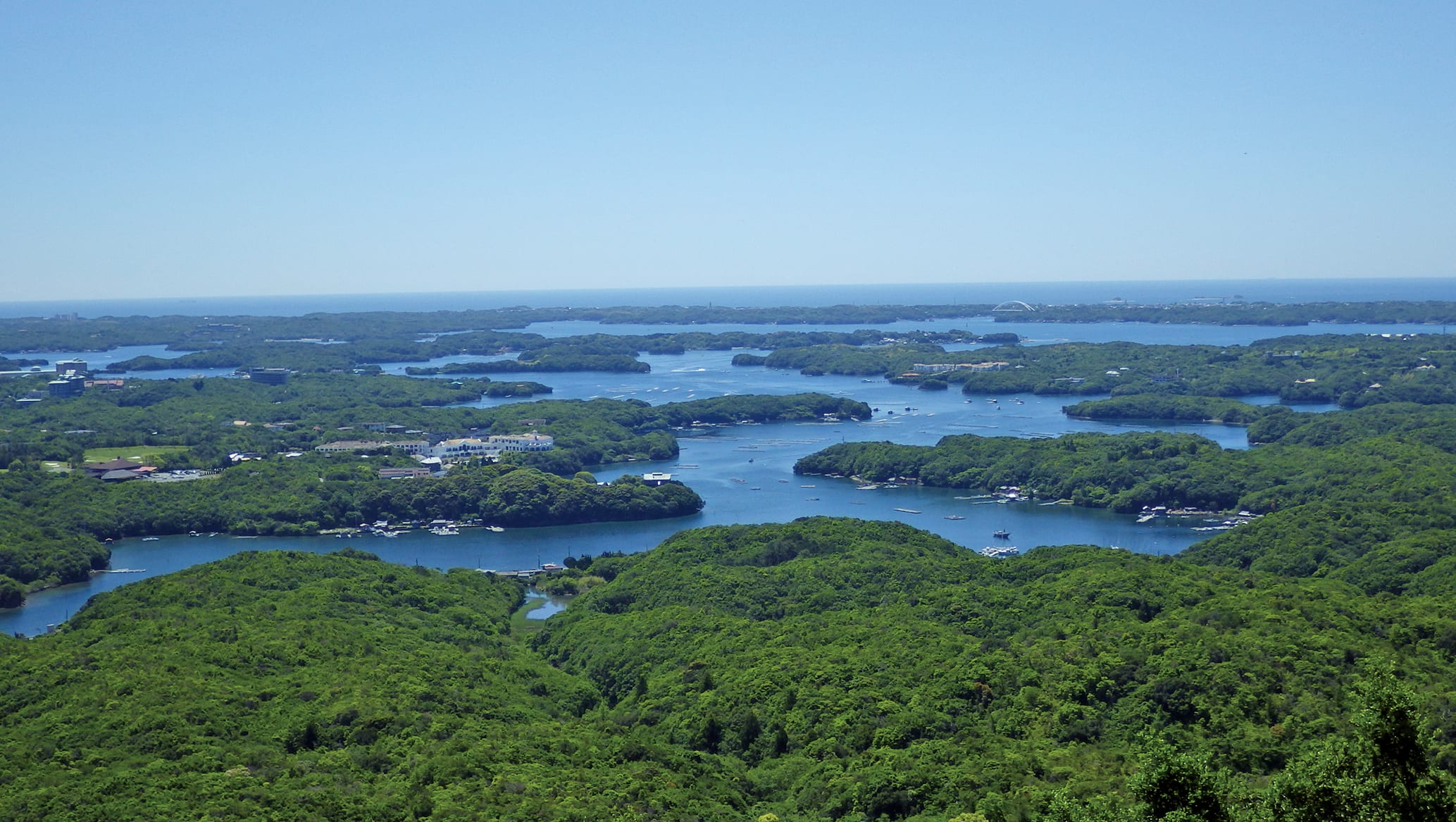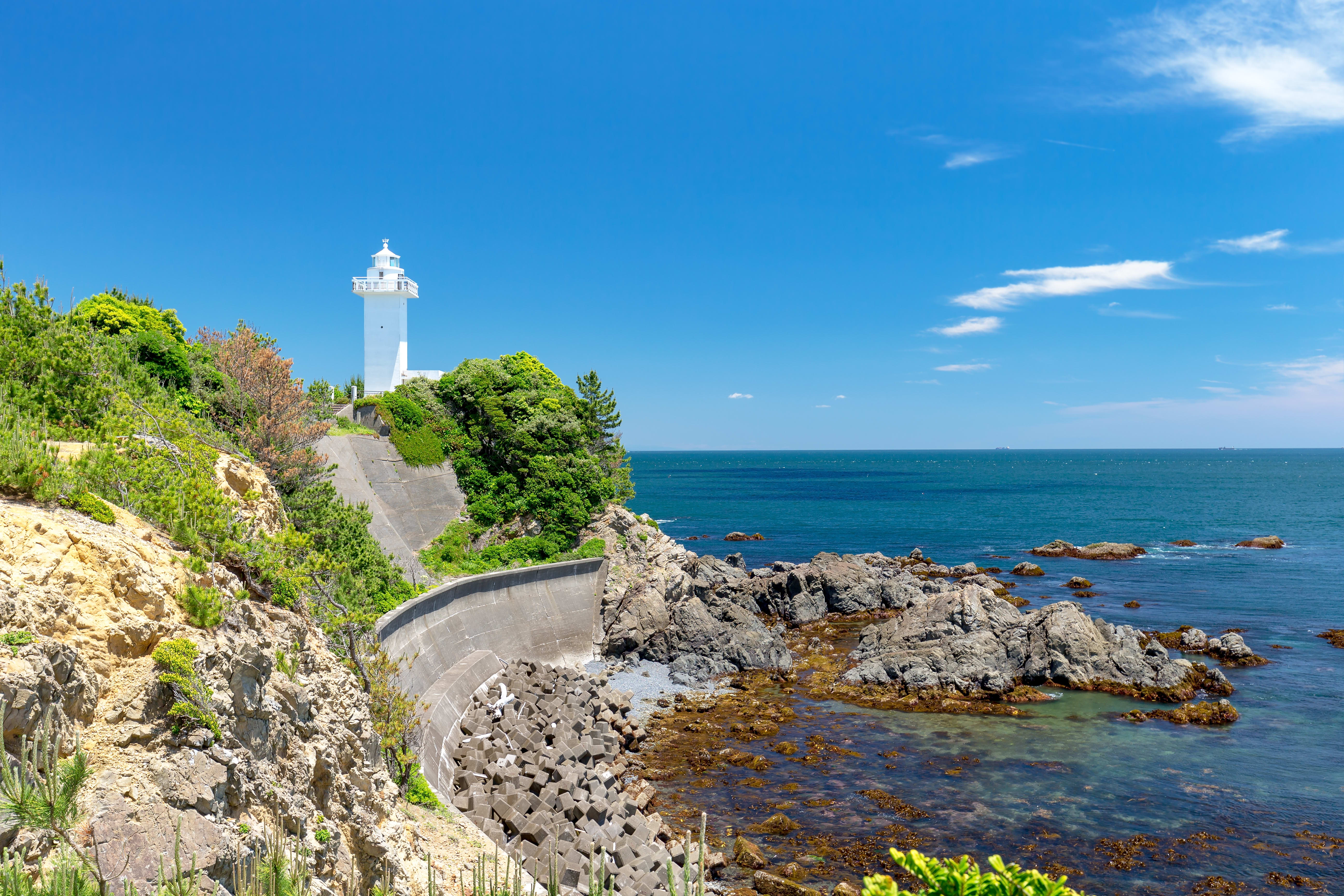
Ama divers during the Shirongo Festival
The Spiritual Heart of the Park
At the spiritual heart of Ise-Shima National Park is Ise Jingu. Founded about 2,000 years ago as a place to worship and give thanks to the sun deity Amaterasu-Omikami, the Ise Jingu precincts blend harmoniously with the surrounding forests. Ise Jingu represents the connection between people and nature. Nutrients from the protected forests in Ise Jingu enrich the sea and help ensure abundant marine life in Ise-Shima. People show gratitude for nature’s blessings, including seafood, through various ceremonies. The Ise Jingu buildings are rebuilt every twenty years, ensuring that traditional craftsmanship survives. This also helps ensure the sacred site remains fresh and timeless, much like the diverse and vibrant nature of Ise-Shima itself.

Local Traditions and Culture
Local communities have traditions and culture stretching back hundreds of years. Local festivals take place throughout the year, providing a special attraction for visitors. These include the Shirongo Festival, where ama diving is the centerpiece. During this event, the female divers, clad in their distinctive white outfits, compete to catch a lucky pair of abalone. Visitors can visit an ama hut and meet a real ama and hear her stories, one of Ise-Shima’s activity programs. Watching an ama cook delicacies such as freshly caught abalone over a fire pit is a memorable experience.
Wandering through fishing villages and island communities offers glimpses of everyday life. Explore the narrow alleyways and see fish and wakame seaweed being dried on racks. In Daiozaki, visitors can book a special opportunity to watch the traditional process of drying bonito over firewood. This has been a specialty of the area for hundreds of years.

Treasures From the Sea
Ise-Shima National Park is famous for its pearls and is the birthplace of the world’s first pearl cultivation techniques. In addition to buying pearl products, hands-on experiences, such as trying to extract pearls directly from an oyster and making necklaces, are also possible in various locations. Areas including Kashikojima Island have strong connections with this industry; many pearl cultivation rafts float in Ago Bay.
Since ancient times, Ise-Shima has been known for its abundance of delicious seafood. Enriched by the nutrients from the forest and the sea, a wide variety of marine life and animals flourish. The region was given the status of miketsukuni in ancient times. This meant that the seafood of Ise-Shima was specially selected for the imperial family. Today, visitors can enjoy the exceptional flavors of Ise-Shima specialties like Japanese spiny lobster and abalone, as well as the wide variety of seaweeds that grow in forests under the sea.

Energizing Hikes and Inspiring Views
Ise-Shima is also home to numerous natural landscapes. Hiking through lush parks and forests rewards visitors with views of Ise-Shima’s natural habitats. Yokoyama Picnic Site offers relaxing viewpoints that showcase Ago Bay, where the calm sea surrounds a multitude of green forested islands. Here, pearl cultivation rafts float on the calm waters. A boat tour around the coast features a variety of environments, from sandy beaches to dramatic jagged rock formations. A hike up the gentle slopes of Mt. Asama, Ise-Shima National Park’s highest mountain, reveals panoramic vistas of Ise Bay and the Pacific from the summit. Mt. Otonashi is a prime spot to see cherry blossoms in spring—many blossoming trees line its promenades.
Climbing to the top of Anorisaki Lighthouse affords inspiring views of the Pacific Ocean on one side and the calm bay on the other, making it an ideal point from which to admire Ise-Shima National Park’s contrasting landscapes. Visitors looking for a romantic spot can enjoy views of the beautiful heart-shaped inlet visible from the Mieshima View Point at Ugura Picnic Site.
The Meoto Iwa (“Husband and Wife Rocks”)—a large and a smaller rock bound together with straw ropes—are one of Ise-Shima National Park’s most famous sights. See the sunrise here in early summer, perfectly framed by the rocks. The Meoto Iwa site has been a place for sun worship since ancient times. Very lucky visitors may even see Mt. Fuji.
























